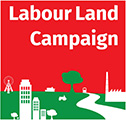LVT is superior to other types of land tax

- It needs to be emphasised that LVT, and its economic impact, are quite different from other types of land tax. These include:
- development land taxes under various guises, which are one-off taxes on the uplifted value of sites following the granting of planning permission for a new use;
- the Stamp Duty Land Tax, paid when properties change hands;
- and so-called Section 106 Agreements, which oblige developers to finance infrastructure or affordable housing as a condition for the granting of planning permission, and therefore are a form of tax.
- The history of development land taxes, including the Development Charge in 1947, the Betterment Levy in 1967, and the Development Land Tax in 1976 – all introduced by Labour Governments, only to be abolished a few years later by incoming Conservative Governments – demonstrates that they tend to inhibit the development of land. That is because owners of land are able to withhold land from use without penalty, but are penalised, in effect, as soon as it is brought into use. In addition, through tacit collusion, landowners and property developers can use the withholding of land to pressurise governments, or future governments, to repeal the tax. Meanwhile, landowners and property developers can simply sit back and watch their landholdings rise in value as the demand for land increases. Furthermore, because of various kinds of exemptions and offsets, and other reasons, these taxes turned out to be severely complicated and costly to implement, and the revenue obtained far less than expected.
- What has misled politicians into supporting development land taxes – including most recently the Planning Gain Supplement proposal that the last Labour Government was considering, but then abandoned – is their focus on the huge differences in the value of land according to its permitted use, especially between land restricted to agricultural use, and that which is designated for industrial, commercial or residential use. Thus, if a landowner suddenly gains planning permission to convert agricultural or commercial land into, say, residential use, he or she could be in for a windfall gain of several million pounds. Development land taxes are perceived as a means for reclaiming a significant portion of that gain for public benefit.
‘a disincentive for developing the land’
- However, as just noted, such taxes tend to act as a disincentive for developing the land, and can lead to the land being withheld from use. Indeed, the experience has been that, following the introduction of a development land tax, such as the Betterment Levy in 1967, land prices have actually gone up, thus making it more costly to acquire land for building, the opposite of what was required.
- In contrast, LVT, which would rise in proportion to the increased land value once planning permission was granted, would be due more or less immediately, so that there would be every incentive to develop the land as quickly as possible.
- Furthermore, instead of being merely a one-off payment, LVT would become due every year in perpetuity, so that the revenue stream for public benefit would far exceed what it would be from a one-off development land tax. Moreover, the LVT would be paid not only on the increased value, but also on the value of the land before planning permission was granted – the so-called residual or ‘current’ value.
- In addition, as a result of the new development, it is likely that the land value of neighbouring properties would rise as a result of additional economic or social activities introduced to the area that would enhance its appeal as a place in which to invest, live, work and socialise. Therefore, additional LVT would be collected from those neighbouring properties following the new development, which would add further to the total revenues collected.
- Meanwhile, the problem with the Stamp Duty Land Tax is that it discourages the change of ownership of properties. In effect, therefore, it penalises those wishing to move to a more convenient location, or more suitable premises, and therefore encourages the inefficient use of land and buildings.

- The problem with Section 106 Agreement payments is their ad hoc nature, and the lack of clarity of criteria used for arriving at such Agreements. Nominally, they can only be levied in order to ‘mitigate harm’ that would otherwise arise from the development, such as increased traffic congestion on local roads, overcrowding in local schools, or the tendency for developments to favour luxury housing at the expense of affordable housing required by people who work in the area.
- This, of course, is all a matter of interpretation. Section 106 Agreements, therefore, are notoriously variable and unpredictable between – and even within – planning authorities, and half of all planning authorities do not even use Section 106 Agreements. Much depends on the negotiating skills of local planning authorities, which, if genuinely acting in the public interest, will want to extract the maximum contribution from property developers. The latter, on the other hand, will seek to keep their obligations to a minimum. Consequently, negotiations can be protracted, perhaps involving expensive legal advice and lawsuits, or appeals against decisions made by the planning authorities. This can make Section 106 Agreements costly to implement, not least because of the delays before society will benefit from the developments being proposed. Furthermore, because of the opaqueness of Section 106 Agreements, it is often hard to ‘dispel the whiff of corrupt paying for planning permission’, tending to favour big national and international property developers, at the expense of local builders who might have a more genuine interest in the local community.
- Late on, the Labour Government, once it had dropped the Planning Gain Supplement, decided to partially replace Section 106 Agreements with a system of ‘Planning Charges’, also known as ‘Community Infrastructure Levies’, similar to the Infrastructure Tariff that was operating in Milton Keynes. Again, this is a form of development land tax. Under the system, in exchange for receiving planning permission, developers have to agree to pay a Planning Charge or Levy when told to do so by local authorities, so that infrastructure can be provided. However, as with all development land taxes, landowners and property developers would still be able to withhold land from use, watching its value rise, simply by not seeking planning permission. And, of course, Planning Charges are again merely a one-off payment, and paid only by the developer, and not by neighbouring properties benefiting from the development, thus limiting the amount of revenue that can be raised.
- LVT would eliminate the need for Section 106 Agreements and Planning Charges, as well as the Stamp Duty Land Tax, because the revenue from LVT over the years, from all properties, would give local authorities the means to make the necessary investments in infrastructure and public services for the benefit of everybody.
Read more of our ‘Manifesto’:
Introduction
Fair
A green tax
Transport
Housing
Farming
The difference
Clear and simple
Implementing
